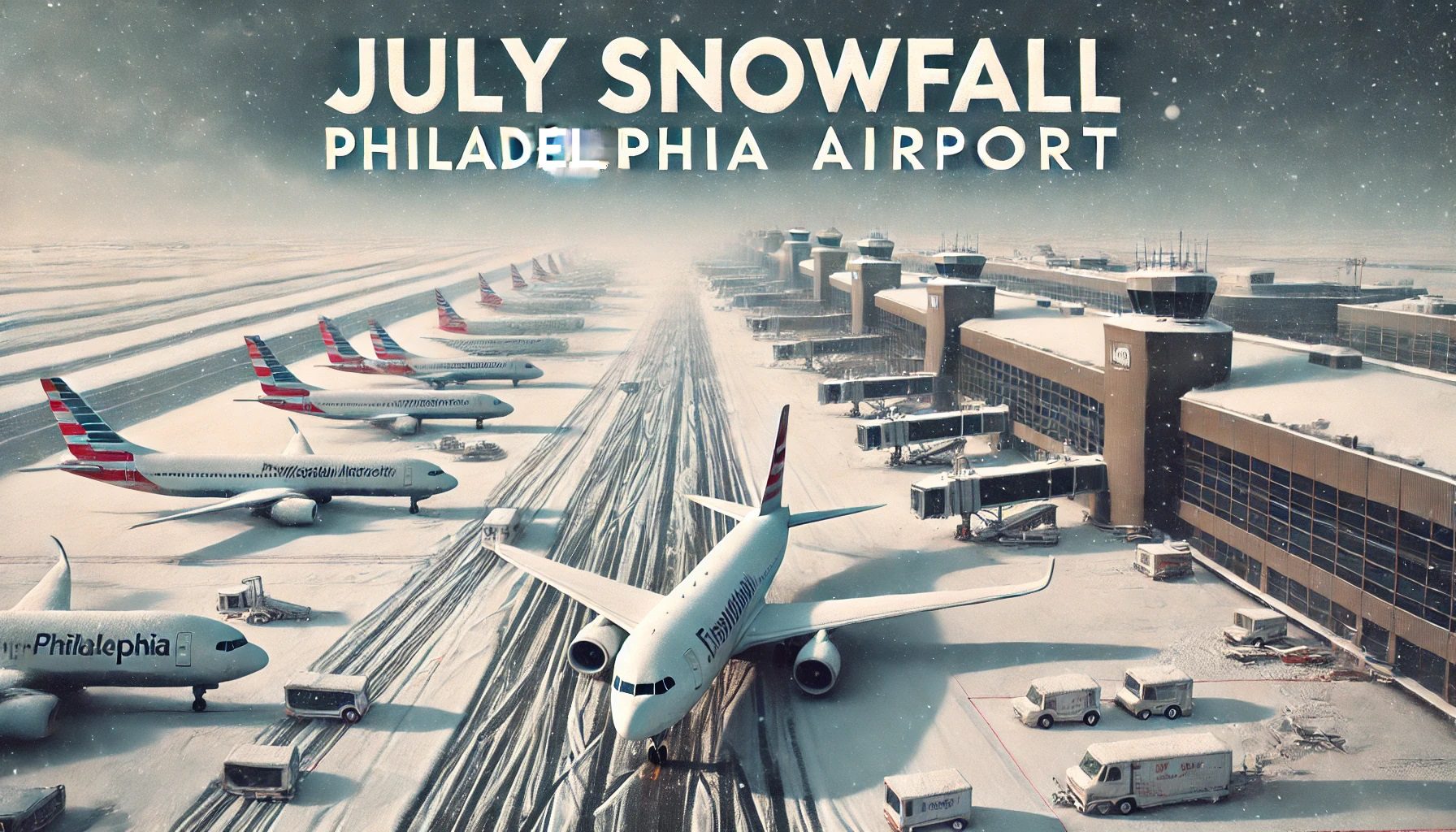Historical Snowfall in Philadelphia Airport

July snowfall philadelphia airport – Philadelphia Airport, officially known as Philadelphia International Airport (PHL), has a long and varied history of snowfall events. These events have ranged in severity from minor dustings to major blizzards that have brought the airport and surrounding area to a standstill.
The unusual snowfall in Philadelphia in July brings to mind the mysterious disappearance of Jay Slater in Tenerife. Slater, a British tourist, vanished without a trace while hiking in the mountains. His case remains unsolved, leaving behind unanswered questions and a sense of unease.
As the snowflakes fall gently in Philadelphia, a reminder of the transient nature of life, we are reminded of the fragility of our existence and the enduring power of mystery.
The airport’s location in the northeastern United States makes it susceptible to both coastal storms and nor’easters, which can bring heavy snow and high winds. In addition, the airport is situated at a relatively low elevation, which means that even moderate snowfall can have a significant impact on operations.
The snowfall in Philadelphia International Airport in July was an unusual event, prompting speculation about the reasons behind it. Some experts suggested that it was a result of a weather phenomenon known as a “cold pool,” while others pointed to the influence of climate change.
As the debate continues, it is worth noting that Glenn Youngkin, the current Governor of Virginia, has been vocal about his support for policies that address climate change. According to glenn youngkin wiki , he has pledged to reduce greenhouse gas emissions and invest in renewable energy sources.
The snowfall in Philadelphia Airport serves as a reminder of the urgent need to take action on climate change, and Youngkin’s commitment to addressing this issue is a positive step in the right direction.
Notable Snowfall Events
Some of the most notable snowfall events in Philadelphia Airport’s history include:
- The Blizzard of 1996: This storm dumped 30.7 inches of snow on the airport, shutting it down for two days and causing widespread power outages.
- The Snowstorm of 2010: This storm brought 22.4 inches of snow to the airport, causing hundreds of flight cancellations and delays.
- The Snowstorm of 2016: This storm brought 18.5 inches of snow to the airport, causing more than 1,000 flight cancellations.
Impact of Snowfall on Airport Operations
Snowfall can have a significant impact on airport operations. Heavy snow can make it difficult or impossible for aircraft to take off and land, and can also cause delays and cancellations. In addition, snow can create hazardous conditions for ground crews and passengers, and can lead to power outages and other infrastructure problems.
Impact of Snowfall on Surrounding Area
Snowfall can also have a significant impact on the surrounding area. Heavy snow can make it difficult or impossible to travel, and can also lead to power outages and other infrastructure problems. In addition, snow can create hazardous conditions for pedestrians and motorists, and can lead to accidents and injuries.
Meteorological Factors Contributing to July Snowfall

The occurrence of snowfall in July at Philadelphia Airport is an extremely rare event that defies the typical meteorological conditions associated with the month. Understanding the meteorological factors that could contribute to such an unusual phenomenon is crucial for assessing the likelihood of its occurrence.
Atmospheric Instability
Atmospheric instability refers to the state of the atmosphere where it is prone to vertical movement and the development of convective clouds. In July, Philadelphia’s atmosphere is typically stable, with warm temperatures and low humidity inhibiting the formation of significant vertical motion. However, in rare cases, a combination of factors can lead to atmospheric instability, including the presence of a cold front or upper-level disturbance that introduces cooler air and triggers convective activity.
Moisture Availability
Sufficient moisture in the atmosphere is essential for the formation of clouds and precipitation. During July, Philadelphia typically experiences low humidity levels. However, if a moisture-laden air mass moves into the region, it can provide the necessary moisture for cloud development and precipitation.
Temperature Fluctuations, July snowfall philadelphia airport
For snowfall to occur, temperatures must be cold enough to support the formation of ice crystals. In July, Philadelphia’s temperatures are typically warm, with average highs in the upper 80s Fahrenheit. However, a sudden drop in temperature, such as that caused by a cold front or upper-level disturbance, could bring temperatures down to the freezing point or below, creating conditions conducive to snowfall.
Historical Data
Based on historical data, the likelihood of snowfall in July at Philadelphia Airport is extremely low. Since records began in the late 1800s, there have been no documented cases of snowfall during the month of July.
Climate Change Implications: July Snowfall Philadelphia Airport

The increasing frequency and intensity of extreme weather events, including snowfall, are a growing concern in the context of climate change. Philadelphia Airport, like many other regions, is not immune to these changes.
Climate change is altering temperature patterns, precipitation patterns, and atmospheric circulation, all of which can affect snowfall occurrence. Rising temperatures can lead to more precipitation falling as rain rather than snow, while changes in atmospheric circulation can alter the frequency and severity of snowstorms.
Impact on Airport Operations
Changes in snowfall patterns can have significant implications for airport operations. Heavy snowfall can lead to flight delays, cancellations, and disruptions to ground transportation. This can have a ripple effect on the local economy, as businesses and travelers are affected.
Impact on Surrounding Community
Snowfall can also impact the surrounding community. Heavy snowfall can lead to hazardous road conditions, making it difficult for people to get around. Additionally, snowfall can cause power outages and other infrastructure disruptions, which can affect residents’ quality of life.